
European Royalty: Russia--The Czar's Desendents in Exile
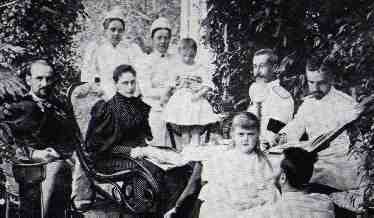
Figure 1.--"Aunt Ella" and the Grand Duchess Marie are seated; the Geand Duke Serge sits on the floor with his back to the camera. The other men are members of his staff. One of the English nuses holds the Grank Duke Dmitri who wears a dress, but has short boyish hair.
|
Exile and banishment for the royal family did not begin with the Communists and the 1917 Bolshevick Revolution. Both Alexander III and his son Nicholas II had difficulties with family members and were foced to banish brothers. After the Revolution, of course, the family members that survived had to live in exile.
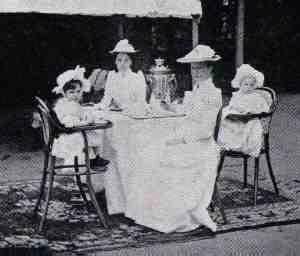
Figure 2.--The Grand Duchess Marie and her brother the Grand Duke Demitris with their English nannies about 1899.
|
Grand Duke Paul
The Grand Duchess Marie in her autobiography Education of a Princess chroicled her and her brother Dimitri's family life. Her father turned out to be the Grand Duke Paul, whio was the uncle of Nicholas II, not his brother. Marie's mother died during the birth of her brother Dmitri. The children were raised by English nannies. In fact, each child had his or her own personal nanny. Often foreign nannies were in demand in certain countries. In part this was due to the foreign lanuage training offered. In other cases it was
the reputation, English nannies and governesses appeared to be have been particularly prised--even in far flung countries. Foreign nannies and governesses were especially important in Russia where many arisocratic families disparaged their own national culture and may have been more at ease speaking French than Russian. Thus the Russian royal family with, families ties to Queen Victoria, often chose English nannies. One would have thought that French nannies might be chosen given the importance of French culture and use of the French language in artistocratic Russian circles. But perhaps the
memories of the Napoleonic Wars or the preceived permissivness of French nannies argued against them. I do not believe that French or Italian nannies were at all in demand. A family portrait taken about 1902 shows her and Dmitri. Dmitri still wears dresses, but has his hair cut boyishly short. A look at their
nursery provides an interesting look at their lifestyle.
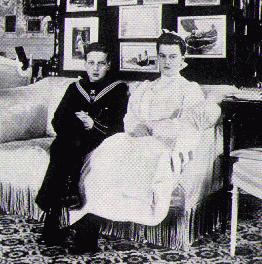
Figure 3.--The Grand Duchess Marie and her brother the Grand Duke Demitris.
|
Marie describes how she and Dimitri discovered their father had a second family:
The year previous, shortly after our return to St. Petersburg for the winter, Dmitri and I had noticed on father's desk a new photograph in a small, gold frame. It was of a boy, 4 or 5 years old--a beautiful little boy with long curls and a dress that came down to his ankles. At our first chance, we asked father who it was. He turned the talk to other matters, avoiding response.
Tsar Alexander III banished Grand Duke Paul for his indisgressions shortly after the family photograph was taken. The Grand Duke returned to Russia after World War I had begun. One report indicated that he survived the Revolution and escaped with his family including Marie and several million dollars worth of jewels. I understand, however, that he was executed by the Bolsehvisks in the Peter and Paul fortress (January, 1919). His son by his second marriage, incidently, was mudered along with the Grand Duchess Elizabeth. Grand Duke Paul had married a Princess Plaey who wrote a book of memoirs. They apparently did not escape with millions in jewels. Fortunately she still had the house in the Bois de Boulogne, but they (with I think two surviving daughters) lived in straightened circumstances there.
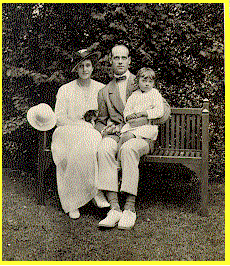
Figure 4.--Natash, Mikhail Alexandrovich and son George in a photograph taken about 1913.
|
Grand Duke Michael
The Grand Duke Mikhail was banished twice by his brother the Tsar Nicholas II. The first banishment was within Russia. Nicholas was attempting to break up the relationship between Mikhail and Natasha. The Tsar reassigned Mikhail to the Cherningov Hussar Brigade, which was located in the town of Orel in a remote part of Russia. Natasha went on a trip to Europe at this time. Mikhail and Natasha defied Nicholas, Alexandra and the Dowager Empress Marie by getting back together upon her return to Russia. They went to Vienna, Austria and got married by a Serbian Orthodox priest, in order that the ceremony performed by him could not be subject to dissolution by the Russian Holy Synod. For breaking his "promise" to Nicholas to not marry Natasha, Mikhail was stripped of his titles and banned from Russia. Mikhail and Natasha, with their newborn son George, spent most of their banishment living on a two hundred acre estate in England. The name of the estate was Knebeworth House which was located in Hertfordshire. Here Mikhail was able to indulge his tastes for art,
music, sports and horses. He was an anglophile and had respect for
the character as well as the political forms of the British Empire.
With the onset of World War I Mikhail wished to return to Russia to take his place in the Army. With the intercession of his friend the Count Vorontzov, he was given permission to return to Russia. Upon his return in August of 1914 Mikhail, who was previously the commander of the Cavalier-Guard (the brigade of the Imperial family), was given nothing to do. Though the intercession of the Vice-General of the Caucasus, Adjutant-General Count I.I. Vorontzov-Dashkov, Mikhail was given the command of the then forming Caucasian Division, fulfilling his wish to be a part of the active army and ending the last vestiges of his banishment.
Mikhail's fateful day would come in March of 1917. He would receive a letter from his brother addressing him as Your Majesty. This is how Mikhail found out that
Nicholas had abdicated for himself and for his son. The next day Mikhail wrote a MANIFESTO to the Russian Parliament with the proposal that if there was to be an end to the Autocracy the Parliament would have to take the power and set up a Constitutional Monarchy. Mikhail then would take the job of Monarch. Never in his letter did he use the word abdicate. Kerensky's Provisional Government did not follow through on this very democratic proposal.
Mikhail spent the remainder of his life living freely at home and then, with increasing restrictions on his movement, he was placed under arrest in the city of Perm (Ural Region). Mikhail was murdered on Lennin's orders between June 12 and June 16, 1918. His wife would not learn the facts of his death until 1934.
Kyril
Kyrill proclaimed himself Tsar of Russia in Paris in 1924 after it was officially confirmed that Nicholas II and his family had been murdered by a Bolshevik death squad. At the coronation service, he pronounced, "I, the head of the Tsarist family and only
legal successor to the Russian imperial throne, hereby take the title of
"Tsar of All Russia, which is unequivocally mine." Kyrill was
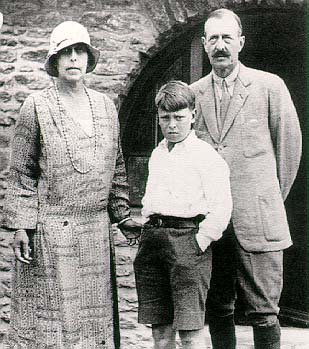
Figure 5.--Nicholas II's successor heir Kyrill and his son Grand Duke Vladimir Kyrillovich in exile in France. Nicolas' brother Michael had declined the title when offered by the Provisional Government in 1917.
|
seventh in line to the throne following Nicholas II,
Nicholas' mother, Maria Fedorovna, his wife, Alexandra Fedorovna, his son Alexei Nikolayevich, his brother, Mikhail Alexandrovich, and his sister-in-law, Maria Pavlovna, who was Kyrill's mother.
According to a law passed in 1797 by Paul I, which stated that only male heirs could succeed to the throne, Kyrill took the title after Mikhail Alexandrovich abdicated in 1917. I'm not sure precisely
what the policy of the provisional government was.
Kyrill was born in 1876. He was a skilled linguist and performed several diplomatic missions on behalf of Nicholas II. He served during the Russo-Japanese war as a senior officer on board the Petropavlovsk battleship and was lucky to escape with his
life when the ship was blown up by a Japanese mine in April 1904.
Kyrill, during his exile in France, Kyrill always dreamed of returning to his homeland and believed firmly that Russia had a great future. At a reception in 1931, he said, My faith in the Russian people is unshakeable. I am convinced that communism will burn itself out and the people will build a
new order out of its ruins. He also believed, It will not be long before the whole world bows down before a free Russia.
Kyrill died in 1938 in Paris and his remains were taken to Germany at his relatives' behest. A reburial was arranged by the Grand Duchess Wladimir of Russia, Leonida Georgiyevna, the widow of his son, Grand Duke Vladimir Kyrillovich. Vladimir was buried in
the Peter and Paul Fortress in April, 1992. Nikolai N Braun, acting head of The Order of Imperial Union of Russia said he would prefer to see the last Russian tsar buried in the imperial rather than the grand ducal tomb. But it's certainly a matter for the imperial family to decide," he added.
Christopher Wagner

Navigate the Boys' Historical Clothing Web Site Russian royal
pages:
[Main Russian royal pages]
[Historical background]
[Nicholas II]
[Alexis]
[Exile]]
Navigate the Boys' Historical Clothing Web Site royal pages:
[Return to the Main royal pages]
[Return to the Main Russian royalty page]
[Austria]
[Belgium]
[Bulgaria]
[Denmark]
[France]
[Germany]
[Italy]
[Japan]
[Jordon]
[Luxemburg]
[Monaco]
[Netherlands]
[Norway]
[Romania]
[Russia]
[Spain]
[Sweden]
[United Kingdom]
[Yugoslavia]
Created: June 6, 1998
Last updated: December 12, 2000







